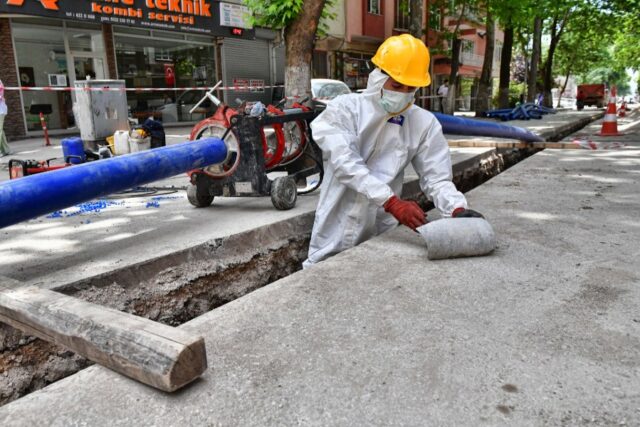Asbestos, a once highly prized material due to its heat resistance and durability, has been unveiled as a silent and deadly threat lurking within the walls of many buildings. Exposure to asbestos doesn’t just lead to immediate health risks. Its scariest aspect lies in its ability to cause long-term detrimental impacts on health, often manifesting years or even decades after the initial exposure. This article unveils the hidden dangers of asbestos exposure, explaining why it continues to pose severe health threats long after the dust has settled.
Risks of First-Hand Asbestos Exposure
Asbestos exposure occurs when individuals inhale or swallow the tiny fibers of the mineral. These fibers can quickly get trapped in the body, causing inflammation and scarring that leads to serious health issues. Let’s take a look at some of the most common health risks associated with first-hand asbestos exposure.
Mesothelioma
Asbestos exposure is the primary cause of this rare and deadly form of cancer that affects the lining of the lungs, heart, or abdomen. When this occurs, you want to reach out to knowledgeable professionals who can provide you with support and guidance during these challenging times as soon as possible. The team associated with https://www.belluckfox.com/boston/ emphasizes the importance of obtaining legal support from experts specializing in assisting victims and their families with legal matters concerning asbestos exposure. With their expertise, they can help you receive compensation and hold responsible parties accountable for their negligence. Next, seek medical attention from a specialist who can provide proper diagnosis and treatment. Don’t face this battle alone; seek help and support from qualified professionals.
Lung Cancer
If you or a loved one has been exposed to asbestos for a prolonged period, you need to be aware of the potential health risks. Lung cancer, caused by inhaling asbestos fibers, is one of the most serious consequences of this exposure.
Unfortunately, symptoms do not typically appear until many years after initial exposure, often making it difficult to diagnose and treat. This can significantly decrease the chances of survival and increase the severity of the cancer. Therefore, you want to seek medical attention if you have been exposed to asbestos or are experiencing any respiratory issues.
Asbestosis
Asbestosis is a debilitating lung disease that occurs due to chronic inhalation of asbestos fibers. When asbestos fibers are inhaled, they can lodge themselves in the lungs, causing inflammation and scarring of the lung tissue. This scarring, medically termed fibrosis, inhibits normal respiratory function and can eventually lead to difficulty breathing and other respiratory issues.
Unfortunately, asbestosis is a chronic disease that worsens over time, and there is currently no cure. Those who work in industries that involve asbestos, such as construction and manufacturing, are at an increased risk of developing asbestosis. It’s crucial to raise awareness about the dangers of asbestos and how to prevent exposure to protect individuals from this debilitating lung disease.
Pleural Thickening
Pleural thickening is a serious condition that can occur due to prolonged asbestos exposure. It affects the lining of the lungs, making it less flexible and thicker. This makes breathing difficult and uncomfortable for many who suffer from this condition.
Although pleural thickening is not a form of cancer, you still need to take the necessary precautions when working with asbestos, as it can lead to other more life-threatening conditions. If you experience shortness of breath or chest pain, then it’s time to seek medical attention. With early detection and proper treatment, those affected by this condition can better manage their symptoms and improve their quality of life.
Other Diseases
Apart from the aforementioned conditions, asbestos exposure has also been linked to other serious health issues, including the following:
- Ovarian Cancer
- Laryngeal Cancer
- Gastrointestinal Cancer
- Kidney Cancer
- Throat Cancer
- Esophageal Cancer
These diseases may not be as common as mesothelioma or lung cancer, but they are still a cause for concern. Asbestos exposure can have severe and long-lasting effects on one’s health, making it crucial to take the necessary precautions and seek medical attention if exposed.
Secondary Exposure
Asbestos has long been recognized as a dangerous substance that can cause deadly illnesses. While many people may assume that only those who worked with asbestos are at risk, the truth is that even those who were never exposed directly to the substance can be in danger.
Secondary exposure can occur when asbestos fibers attach to clothing, shoes, or other objects and are then brought into the home. This can put loved ones at risk, as they may inhale the fibers without even realizing it. Children of those who worked with asbestos may also be at risk, as they could have been exposed to the substance through their parents’ work clothes or other belongings.
No Safe Level of Exposure
Unlike other toxins, there is no safe level of asbestos exposure. Even a tiny amount of exposure can put one at risk of long-term health complications such as mesothelioma and lung cancer. Regrettably, many people continue to come into contact with asbestos regularly even though it has been banned in many countries since 2005.
Especially in older buildings, asbestos can be found in insulation, floor tiles, roofing materials, and more. Therefore, it’s important to always take the necessary precautions when working with or around older buildings to avoid exposure.
Delayed Onset of Symptoms
It’s not uncommon for individuals to go decades without realizing they’ve been exposed, only to develop debilitating symptoms years later. This long latency period can range anywhere from 10-40 years, making it difficult to trace the source of exposure.
The scary part is that by the time symptoms surface, it may be too late to seek effective treatment. So, what should you do if you suspect you may have been exposed to asbestos? The best course of action is to seek medical attention immediately and inform your doctor about any potential exposure. They can then monitor your health and provide early detection and treatment if necessary.
Asbestos exposure is a grave health concern that affects countless individuals around the globe. Its pervasive nature and the delayed onset of symptoms make it a silent killer that remains a threat long after exposure. The pernicious effects of asbestos-related diseases like mesothelioma, lung cancer, and asbestosis are a testament to the insidious nature of this material.
As awareness about the associated health risks continues to grow, it becomes all the more important for individuals to take necessary precautions and for policy-makers to enforce stricter regulations to prevent future exposure. It’s a collective effort to safeguard the health and well-being of our communities from the long-term threats posed by asbestos.














